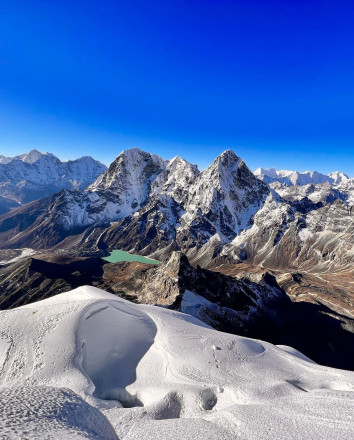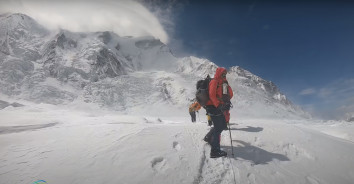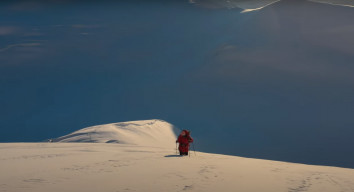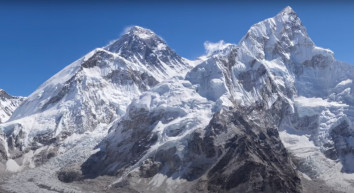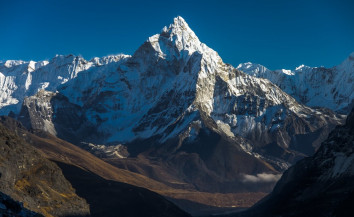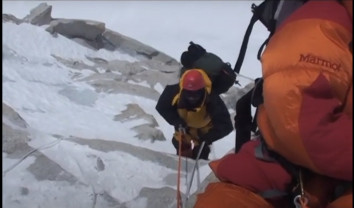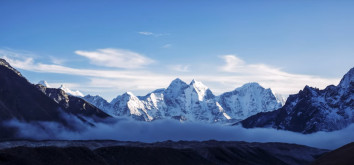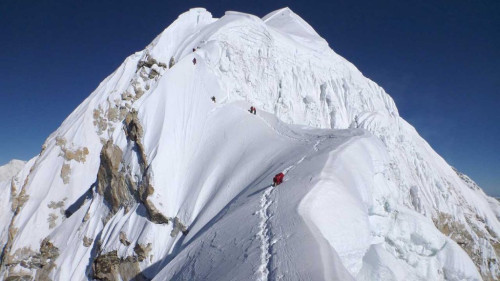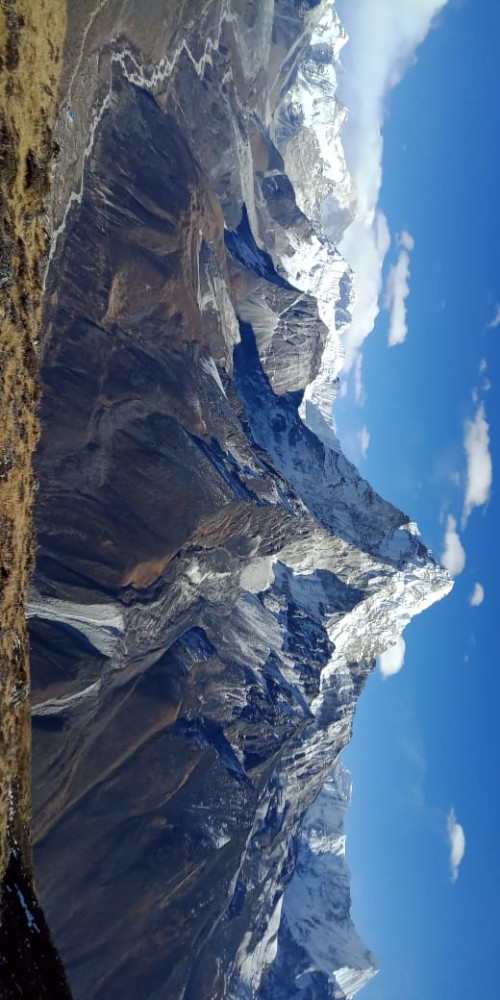Ask yourself. Why the Manaslu Expedition in 2022? If you're looking to summit the Everest expedition, the world's highest mountain, first climb Manaslu, at 8,163 metres, for final preparation to excel in your climbing skills for it. It's the reason why experienced climbers prefer the Manaslu expedition before attempting Everest. This expedition teaches humility, endurance, and decision-making in extreme conditions to make you a confident climber.
The word Manaslu translates as "The Mountain of Spirit" from Sanskrit to English. At over 8,163 metres in the Manaslu expedition, the fearless spirited climbers soak themselves in the thrill and heavenly scenery.
Manaslu towers on East to Annapurna and rises above Marshyangdi and Budhi Gandaki Valley. Manaslu, a prominent mountain in the Mansiri range, is in the Gorkha district. The two world's highest peaks inside 20th rank, Himalchuli at 7,893 metres and Ngadi Chuli at 7,871 metres, accompany Manaslu.
A wise man once said, "It's not about the destination, but the journey you make matters most." Exactly, reaching the summit of Manaslu is not everything, but the learning, endurance, and technical mastery throughout Manaslu expedition acclimatisation rotations and climbs to High Camps are crucial.
First successful ascent of Manaslu
From the North-East face, on the fierce wind and snow blizzards, two members of a Japanese expedition team successfully reached the Manaslu Summit on May 9, 1956. Gyalzen Norbu, a Sherpa, and a Japanese climber Toshio Imanishi made the first heroic feat, climbing 8,163 metres from the Manaslu summit.
Since then, the climbing community has often called this mountain a Japanese mountain, a homage to the first ascenders. The year 2016 celebrated the 60th anniversary of the first successful Manaslu expedition summit.
Route to Manaslu Base Camp
Manaslu's expedition begins with our gradual hike and acclimatisation.
We'll take a road trip to Besisahar and trek to Machha Khola, Jagat, Deng, Namrung, and Samagaon. We'll stop at Samagaun, at 3,530 metres, for acclimatisation.
We'll reach Manaslu Base Camp at 4,700 metres with a day hike from Samagaun.
Manaslu base camp will be our home for nearly a month. We'll organise a puja ceremony before starting any activities on the mountain. The routine acclimatisation, preparations, and excellence in climbing techniques will be prime events throughout the climbing period.
World Expedition Nepal will set up tents and camps before the expedition arrives at the base camp. Our expert climbing guides, premium climbing gears, expert design itinerary, and adequate climbing preparations will bring us success in the Manaslu expedition.
Manaslu expedition climbing strategy and High Camps
Due to the technical climb of Manaslu, we request our clients joining the team have at least two 8,000 metres of climbing experience. On top, climbers with experience in Shishapangma and Cho Oyu find this expedition the best fit.
There'll be four main high camps from Manaslu Base Camp to Summit. We'll set Camp I at 5,500 metres, Camp II at 6,250 metres, Camp III at 6,800 metres, and Camp IV at 7,450 metres.
We'll partition the climbing sections into four different camps. There are six Manaslu climbing routes, but most climbers and guides prefer the NorthEast ridge. Our routine acclimatisation at four High Camps will prepare us for the final summit push.
Base Camp at 4,800 metres
Manaslu Base Camp is where you'll spend most of the time preparing and acclimatising. We'll set up the tents at rocky moraines, far from avalanche-prone regions.
Before you reach the base camp, our well-managed logistics team will establish camps, tents, kitchens, and everything. Here, you'll meet Sherpa guides who will look after you 24/7 throughout the expedition.
There'll be a pooja ceremony before starting our climbing. Climbers and Sherpa guides believe that worshipping a mountain god brings fortune and success to the expedition.
Manaslu Camp I at 5,700 metres
Climbing to Manaslu expedition Camp-I requires excellent navigation skills through crevasses and ice walls. The first section of the glacier is technically demanding. Thus, our Sherpa guide will lead the team to Camp I after preparing the basic and advanced climbing techniques.
The initial climb will be over rocky terrain and slopes often covered in grasses. The crampon point, also called the mouth of the glacier, is an hour's climb from the base camp. The three-hour climb on the glacier takes us to Camp I. There will be two Camp I within a 100-metre distance.
Manaslu Camp II at 6,400 metres
The core icefall throughout the climbing is between camps I and II. The gradual ascend includes a fair walk on snow, steeper icy ridges, crossing two ladders, and a steep climb on snow. In the last section, snow climbing takes nearly five tiring hours. Every climber can't escape the arduous climb through several ice walls, 100 metres long and 65 degrees steeper.
Camp II, on snowy terrain, sits above the crux of the icefall.
Manaslu Camp III at 6,800 metres
The cumbersome climb among all camps is the climb from Camp II to Camp III. It's a three-hour climb that is free from steep ridges and ladder crossing.
But, a few crevasses over a metre need extra caution. The exposed surface, however, is prone to cold and wind. Though the sunny days in Spring in this section are hot, some climbers claim.
Manaslu Camp IV, 7,500 metres
In the sense of physical and mental exhaustion, the climb from Camp III to Camp IV is a day-long climb. As the altitude increases, you approach the death zone. Even the minimal effort at this altitude develops significant fatigue. The reduced oxygen takes a toll on your body.
The climb includes a four-hour climb on steep snow that rises to 55 degrees. At this altitude, the ice layers get covered with puffy snow, making the hike dangerous if no extra caution is maintained. Physical endurance comes in handy while navigating the steep snow portions over 7,000 metres in extreme conditions.
Climbing Manaslu Summit at 8,156 metres
The 17 hours long summit push of the Manaslu expedition is tiring and rewarding. The sweat and glimpses of inspiring landscape throughout the summit push will soak in you.
We'll begin our climb at midnight and make it to the summit at around 7 am. The glittering sun, pouring its rays over the mountains, is heart-melting. Our Sherpa guides will check the fixed lines, clear the snow and make the route for the summit push.
The summit push from Camp IV is nontechnical but physically demanding. After celebrations, sightseeing, and photography sessions at the top, we'll prepare for the descent, all down to the base camp.

 Recommended On
Recommended On
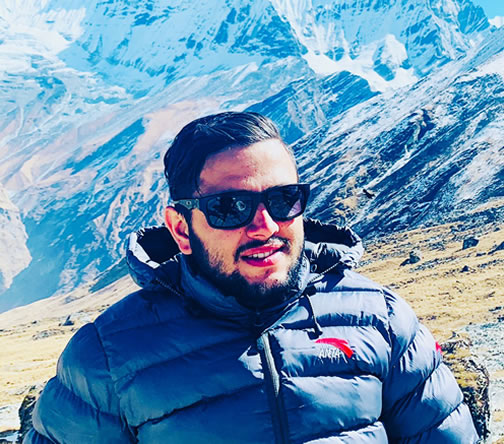

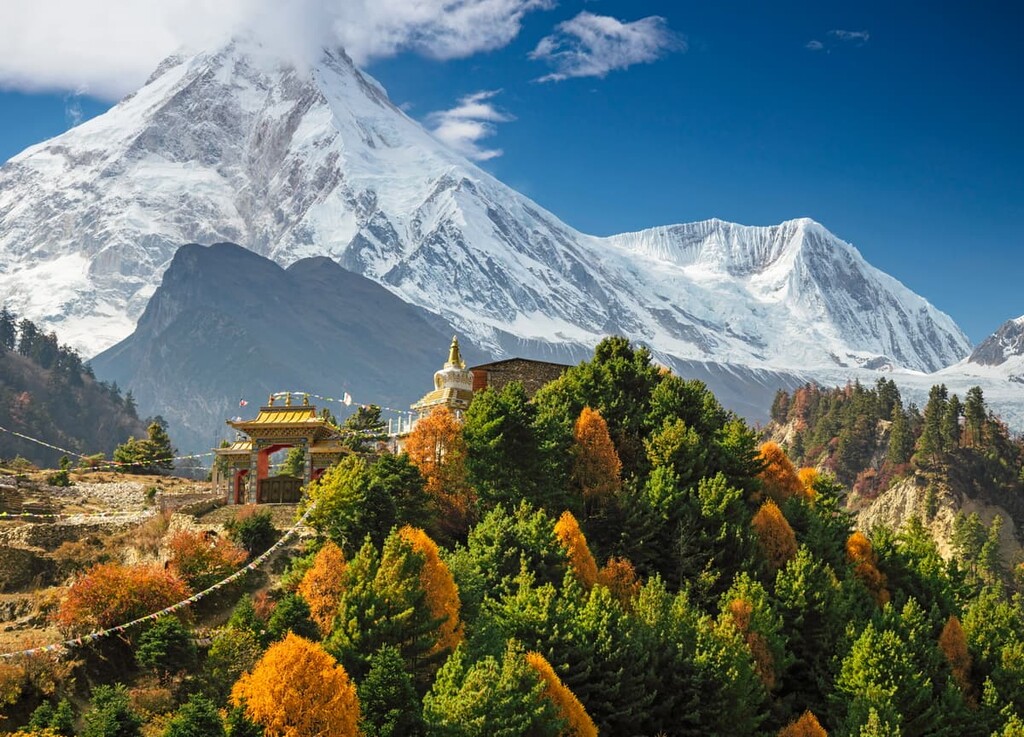

 Photos
Photos


 8000m Peak Climbing , Nepal
8000m Peak Climbing , Nepal  66 Days
66 Days  US$31000
US$31000
